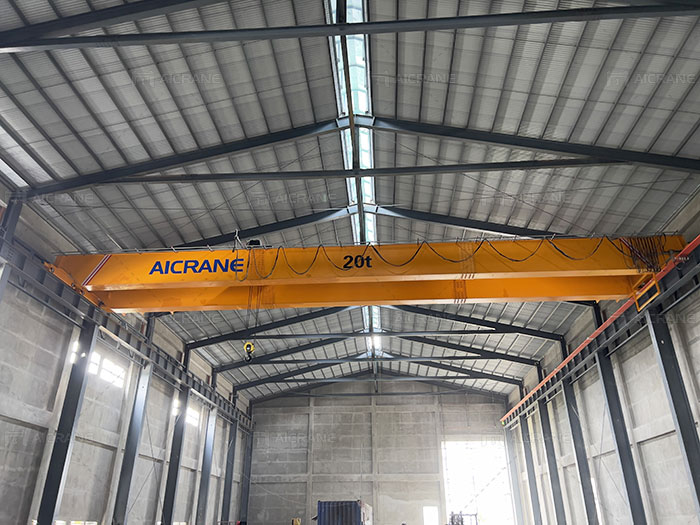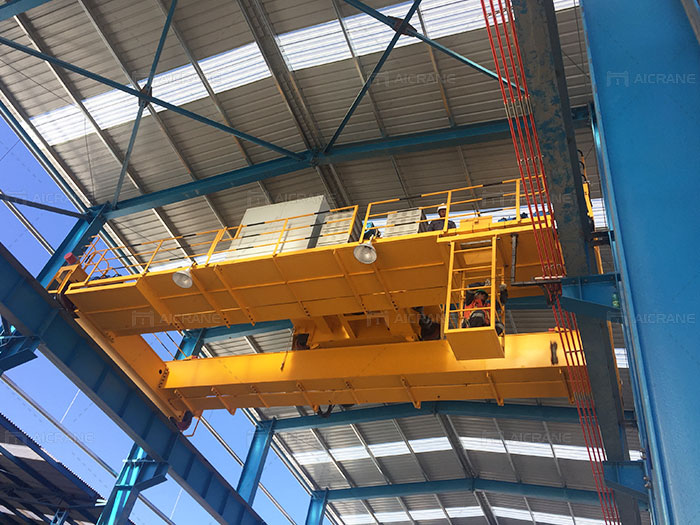When it comes to industrial operations, the choice of overhead crane capacity is a critical decision that can significantly impact efficiency, safety, and profitability. Selecting the correct crane capacity ensures your equipment meets operational demands while minimizing risks and maintenance costs. This guide explores how to choose the right overhead crane capacity for your business needs, focusing on key factors, practical examples, and expert recommendations.

Understanding Overhead Crane Capacity
Factors to Consider When Choosing Crane Capacity
1. Nature of the Load
- Weight: Determine the heaviest load you plan to lift. It’s crucial to choose a crane with a capacity slightly higher than your maximum anticipated load.
- Size and Shape: Bulky or irregularly shaped loads may require specialized lifting attachments, impacting the crane’s capacity.
2. Frequency of Use
- Light Duty: For occasional use, such as in small workshops or maintenance tasks, a lower-capacity 10 ton overhead crane may suffice.
- Heavy Duty: For continuous operations in industries like steel mills or shipyards, opt for a crane designed to handle high-capacity loads repeatedly.
3. Work Environment
- Indoor vs. Outdoor: Outdoor environments may require cranes with weather-resistant features, which can influence capacity.
- Temperature and Humidity: Extreme temperatures or corrosive environments may necessitate special materials or coatings that affect capacity.
4. Span and Height Requirements
- The span (distance between the crane’s runway rails) and lifting height directly influence the crane’s size and capacity.
5. Future Growth
- Consider potential future increases in load requirements to avoid outgrowing your crane’s capacity prematurely.

Types of Overhead Cranes and Their Capacities
Understanding the different types of overhead cranes can help you match the right capacity to your specific needs:
1. Single Girder Overhead Cranes
- Capacity: Typically up to 20 tons.
- Application: Ideal for light to medium-duty tasks, such as in small manufacturing units or warehouses.
2. Double Girder Overhead Cranes
- Capacity: 20 tons to over 500 tons.
- Application: Suitable for heavy-duty tasks in industries like power plants, shipyards, and steel mills.
3. Custom-Built Overhead Cranes
- Capacity: Tailored to specific requirements.
- Application: Designed for unique applications, such as handling large precast concrete components or heavy machinery.
How to Determine the Right Capacity
1. Conduct a Load Analysis
- Evaluate the weight, size, and frequency of the loads you will handle.
- Include potential load variations and peak demands in your analysis.
2. Assess Workflow Requirements
- Analyze the operational workflow to determine the crane’s role, such as lifting, loading, or assembly tasks.
3. Consult with Experts
- Engage with overhead crane manufacturers or engineers to understand technical specifications and industry standards.
- Utilize software simulations to visualize how different crane capacities will perform in your workspace.
4. Consider Safety Margins
- Opt for a crane with a capacity 10-20% higher than your maximum load to account for unforeseen variables.
Practical Examples
Case Study 1: Power Plant Equipment Lifting
A power plant required a crane to lift and transport equipment weighing up to 275 tons. After evaluating their needs, they opted for a double girder overhead crane with a 300-ton capacity, ensuring safety and future scalability.
Case Study 2: Warehouse Operations
A logistics company handling loads up to 10 tons selected a single girder overhead crane with a 12-ton capacity. This choice provided adequate lifting power while maintaining cost-efficiency.
Common Mistakes to Avoid
- Underestimating Load Requirements: Selecting a crane with insufficient capacity can lead to operational delays and increased maintenance costs.
- Ignoring Environmental Factors: Failing to consider temperature, humidity, or corrosive conditions can reduce the crane’s lifespan.
- Overlooking Future Needs: Not accounting for potential growth can result in premature obsolescence.
- Neglecting Safety Standards: Ensure the crane meets local and international safety regulations to prevent accidents.
Benefits of Choosing the Right Capacity
- Enhanced Safety: Reduces the risk of accidents and equipment failure.
- Improved Efficiency: Ensures smooth and uninterrupted operations.
- Cost Savings: Minimizes repair and maintenance expenses by preventing overloading.
- Future-Proofing: Accommodates potential increases in operational demands.
Final Thoughts
Selecting the right overhead crane capacity is not just about meeting current operational needs—it’s a strategic decision that affects safety, efficiency, and long-term profitability. By carefully analyzing your load requirements, consulting with experts, and considering future growth, you can choose a crane that aligns with your business objectives.
Whether you need a light-duty crane for occasional tasks or a heavy-duty model for continuous operations, taking the time to make an informed decision will pay dividends in the form of improved performance and reduced downtime. Remember, the right crane capacity is an investment in your business’s success and safety.